-
Aug
06
2025
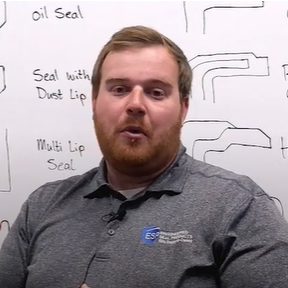
The Hidden Cost of Microleaks in Food Processing Equipment
Microleaks—those tiny, often undetectable breaches in sealing surfaces — can quietly cost food processors tens of thousands of dollars annually. At Engineered Seal Products (ESP), we regularly work with OEMs and processors to identify and eliminate these hidden risks before they snowball into major losses....
Posted by Louis Lenz | Categories: Engineering, Materials
-
Jul
29
2025
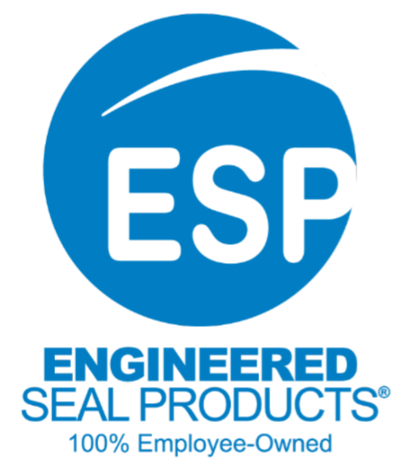
ESP: Official Chemours Genuine VITON™ Licensee
Engineered Seal Products (ESP) is a proud authorized Chemours VITON™ licensee. This official designation marks our ongoing commitment to delivering the highest-quality sealing solutions to our customers across various industries....
Posted by ESP | Categories: Materials
-
May
08
2025
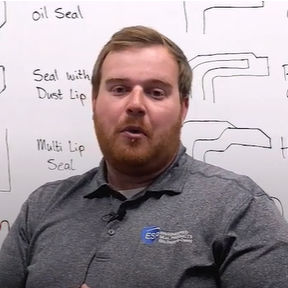
Choosing FDA 21 Compliant Rubber Seals
Learn how to choose FDA 21 CFR 177.2600 compliant rubber seals for food-grade applications....
Posted by Louis Lenz | Categories: Engineering, Materials
-
Feb
03
2025
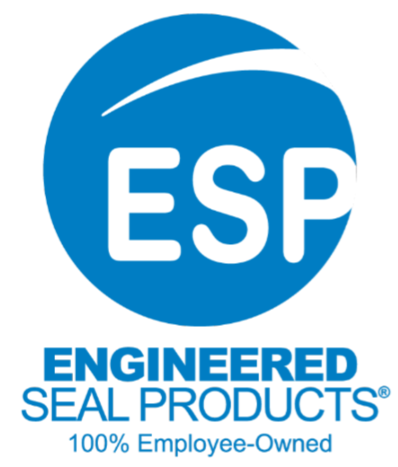
ESP Reengineered PTO Layout
ESP Engineering team comprehensively redesigned the PTO sub-assembly, introducing an independent cover design for the PTO seal and bearing....
Posted by ESP | Categories: Engineering, Radial Shaft Seals
-
Jan
24
2024
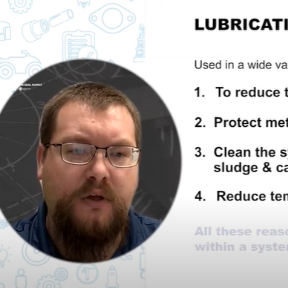
Lubrication & Its Effects In A Sealing System
Hello and welcome to another installation of white papers on whiteboards. My name is Keith Flaherty, Validation Engineer at Engineered Seal Products. Today, we will be talking about lubrication and its effects in the sealing system....
Posted by Keith Flaherty | Categories: Engineering, Radial Shaft Seals
-
Aug
14
2023
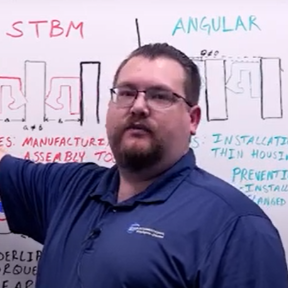
Radial Shaft Seal Misalignments
My name is Keith Flaherty, and I'm a validation engineer here at Engineered Seal Products. Today, we will be talking about alignments, or misalignments, in a radial shaft seal system....
Posted by Keith Flaherty | Categories: Engineering, Radial Shaft Seals
-
Aug
10
2023

Design for Manufacturing
Hi, I'm Brittney – a senior application engineer with ESP. Today we will talk about design for manufacture-ability and design for manufacture-ability / repeatability, known as DFM or DFMR....
Posted by Brittney Wilmington | Categories: Engineering, Quality
-
Aug
04
2023
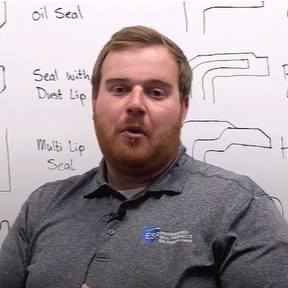
Introduction to Radial Shaft Seals
Hi, I'm Lewis Lenz. I'm an application engineer here at engineered seal products. Today I would like to go over an intro to radial shaft seals. Specifically, to discuss the application details of what the customer's parameters might be, the envelope in which the seal is going to go into, and then some common lip profiles that we typically recommend. ...
Posted by Louis Lenz | Categories: Radial Shaft Seals
-
Aug
04
2023

Best Practices for O-Ring Installation
Today we are going to talk about best practices for o-ring installation: Pre-checks and verifications, How you want to lubricate your o-ring, How you want to install, Post-checks and verifications....
Posted by Tim Arp | Categories: O-Rings
-
Dec
20
2021
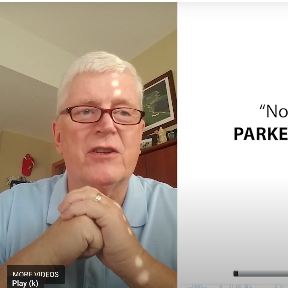
Parker Pony Rod Seal Benefits
Welcome to the next installment of Not All Seals Are Created Equal by ESP International. Today I want to talk a little bit about the oil and gas industry and specifically one of the common maintenance seals used in the industry. That being the pony rod seal....
Posted by Don Grawe | Categories: Materials, Radial Shaft Seals, Hydraulic
-
Oct
27
2021

What Is ESP's Quality Management System?
Hi, my name is Corey Denner. I'm a quality engineer at ESP International in Cedar Rapids, Iowa. I want to spend a few minutes sharing some details about the quality management systems at ESP...
Posted by Corey Denner | Categories: Quality
-
Jun
09
2020
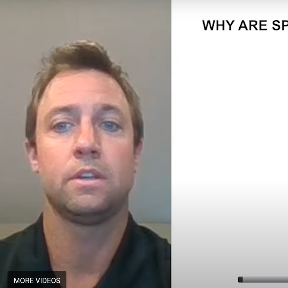
Seal Spring Types
Four Types of Seal Springs Whitepapers On Whiteboard VIDEO TRANSCRIPT Why Are Springs Used With Seals? The main reason to use a spring would be to overcome the limitations of the primary seal element. Generally, seals made from...
Posted by Jason Huff | Categories: Radial Shaft Seals
-
Jun
09
2020
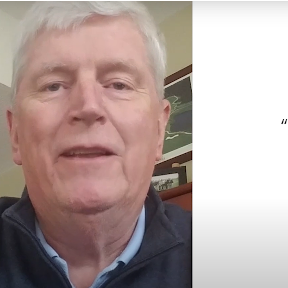
Unique Benefits of Parker JM Clipper Seals
“Not All Seals Are Considered Equal” Parker JM Clipper® Seal Whitepapers On Whiteboard VIDEO TRANSCRIPT Welcome to our next installment of ESP’s “Not All Seals Are Created Equal.” Today we are going to talk...
Posted by Don Grawe | Categories: Radial Shaft Seals
-
Apr
15
2020
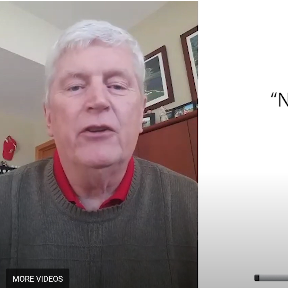
O-Ring Spiral Failure
“Not All O-Rings Are Considered Equal” Spiral Failure Whitepapers On Whiteboard VIDEO TRANSCRIPT Hello and welcome to another installment of “Not All O-Rings Are Created Equal.” I’m going to take a few minutes...
Posted by Don Grawe | Categories: O-Rings
-
Mar
16
2020

Are Piston & Rod Wear Rings Interchangeable?
Are Piston & Rod Wear Rings Interchangeable? Whitepapers On Whiteboard Click on the image to open in a New Tab. VIDEO TRANSCRIPT Today we are going to talk about the differences between piston and rod wear rings. What I’ve...
Posted by Jesse Thomas | Categories: Hydraulics
-
Feb
14
2020
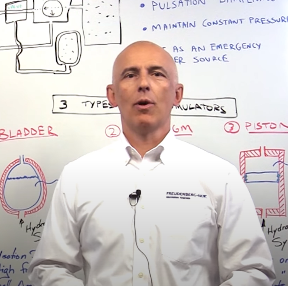
What Is An Accumulator?
What Is An Accumulator? Whitepapers On Whiteboard Click on the image to open in a New Tab. VIDEO TRANSCRIPT Hi everybody. Welcome to white papers on whiteboard. My name is Miguel Vita. I work for Freudenberg in the hydraulic...
Posted by Miguel Vita | Categories: Hydraulics
-
Dec
27
2019
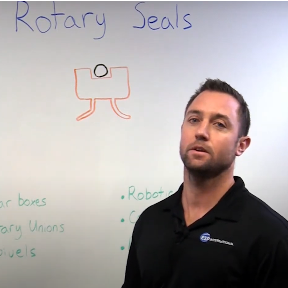
Why PTFE Rotary Seals vs normal rubber?
Why PTFE Rotary Seals vs Normal Rubber? Whitepapers On Whiteboard Click on the image to open in a New Tab. VIDEO TRANSCRIPT Today we’re going to talk about PTFE rotary seals. PTFE is more commonly...
Posted by Jason Huff | Categories: Radial Shaft Seals, Materials
-
Nov
05
2019
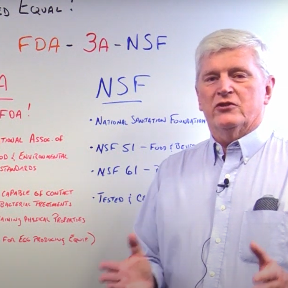
What is FDA, 3A, & NSF?
What is FDA, 3A, & NSF? Food Grade & Potable Water. Whitepapers On Whiteboard SUMMARY FDA, 3A, and NSF are common standards for the production of o-rings within the food grade and potable water industries. Each...
Posted by Don Grawe | Categories: Materials
-
Sep
18
2019
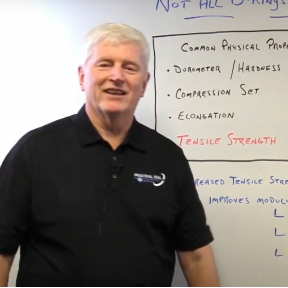
What Is Tensile Strength?
Not All O-Rings Are Created Equal! (Tensile Strength) Whitepapers On Whiteboard SUMMARY Welcome to our latest edition of “Not All O-rings Are Created Equal.” In previous editions, we’ve talked about some of the...
Posted by Don Grawe | Categories: O-Rings
-
Aug
02
2019
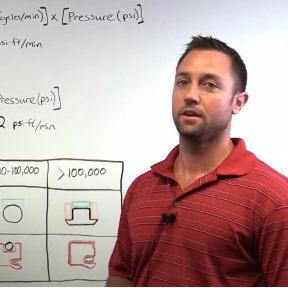
The Importance of the PV Value
The Importance of the PV Value When Selecting A Seal Whitepapers On Whiteboard SUMMARY Pressure velocity, or PV value, is the combination of the pressure of the application and the speed of either the rotating or...
Posted by Jason Huff | Categories: Radial Shaft Seals
-
Jul
19
2019
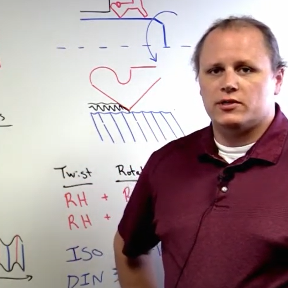
Shaft Lead A.K.A "Twist"
Shaft Lead A.K.A “Twist” Whitepapers On Whiteboard SUMMARY For optimum performance of seals, the shaft surface texture must be optimal. A rough surface texture will cause the seal to wear out quickly, while a...
Posted by Andrew Rommann | Categories: Radial Shaft Seals, O-Rings
-
Jul
19
2019
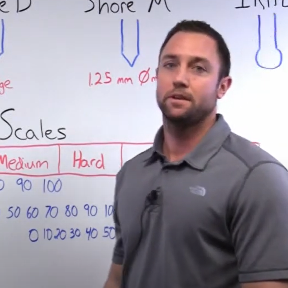
Durometer Scales - The Basics
Durometer Scales – The Basics Whitepapers On Whiteboard SUMMARY Today we’re going to talk about durometer of rubber products. Durometer is a measurement of hardness and like other hardness test measures the...
Posted by Jason Huff | Categories: O-Rings
-
Jul
19
2019
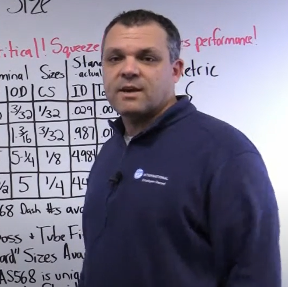
How To Measure O-Rings
How To Measure O Rings (AS568 Aerospace Standard) Whitepapers On Whiteboard SUMMARY The AS568 o-ring size chart, published by the Society of Automotive Engineers (S.A.E), sets a standard for universal o-ring sizing. The...
Posted by DJ Rodman | Categories: O-Rings
-
Jul
19
2019
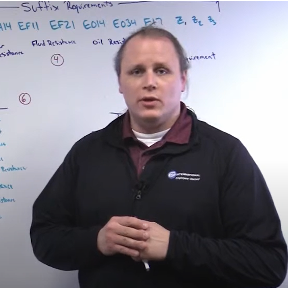
Deconstructing An ASTM D2000 Line Callout
Deconstructing An ASTM D2000 Line Callout Whitepapers On Whiteboard SUMMARY The Society of Automotive Engineers (SAE) and the American Society for Testing and Materials (ASTM) established ASTM D2000 to help provide...
Posted by Andrew Rommann | Categories: Radial Shaft Seals, O-Rings, Materials
-
Jul
19
2019
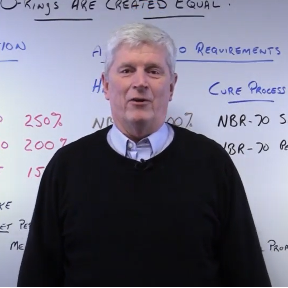
Not All O-Rings Are Creaed Equal! Part II (Elongation)
Not All O-rings Are Created Equal! Part II (Elongation) Whitepapers On Whiteboard SUMMARY In most applications, to create an effective seal an o-ring must be slightly smaller than the groove it sits on – stretched...
Posted by Don Grawe | Categories: O-Rings
-
Jul
19
2019
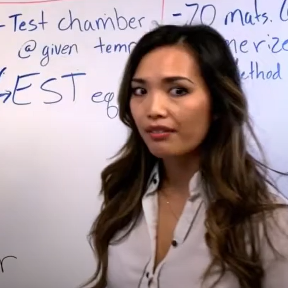
Obtaining Elastomer Shelf Life
Obtaining Elastomer Shelf Life Whitepapers On Whiteboard SUMMARY “Shelf life” is the maximum time (beginning with manufacture date) that an o-ring or elastomeric seal – with proper packaging and storage...
Posted by Hanna Nguyen | Categories: Radial Shaft Seals, O-Rings, Materials, Hydraulics
-
Jul
19
2019
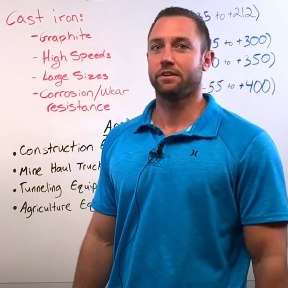
Metal Face Seal Basics
Metal Face Seal Basics Whitepapers On Whiteboard SUMMARY Metal Face Seals provide superior performance in extreme applications where positive lubricant retention and the ability to keep out damaging and/or abrasive...
Posted by Jason Huff | Categories: Metal Face Seals, O-Rings
-
Jul
19
2019
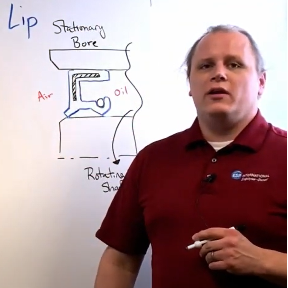
Features of Radial Shaft Seals
Features of Radial Shaft Seals (One Lip, Two Lip, Red Lip, Blue Lip) Whitepapers On Whiteboard SUMMARY Rotary shaft seals, also known as lip seals, are used to seal rotary elements. Deciding on the type of radial shaft...
Posted by Andrew Rommann | Categories: Radial Shaft Seals
-
Jul
16
2019
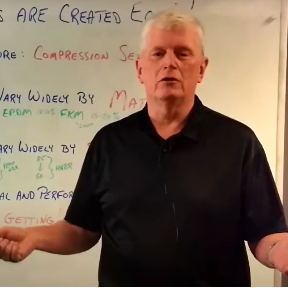
Not All O-Rings Are Created Equal! Part I
Not All O-rings Are Created Equal Whitepapers On Whiteboard SUMMARY A premature o-ring failure is often times due to a combination of root causes. Let’s dive into one of those causes – Compression Set...
Posted by Don Grawe | Categories: O-Rings